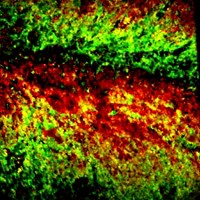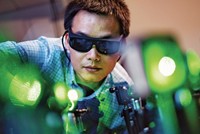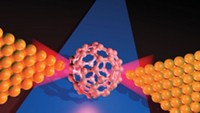Advertisement
Grab your lab coat. Let's get started
Welcome!
Welcome!
Create an account below to get 6 C&EN articles per month, receive newsletters and more - all free.
It seems this is your first time logging in online. Please enter the following information to continue.
As an ACS member you automatically get access to this site. All we need is few more details to create your reading experience.
Not you? Sign in with a different account.
Not you? Sign in with a different account.
ERROR 1
ERROR 1
ERROR 2
ERROR 2
ERROR 2
ERROR 2
ERROR 2
Password and Confirm password must match.
If you have an ACS member number, please enter it here so we can link this account to your membership. (optional)
ERROR 2
ACS values your privacy. By submitting your information, you are gaining access to C&EN and subscribing to our weekly newsletter. We use the information you provide to make your reading experience better, and we will never sell your data to third party members.
Analytical Chemistry
Raman Nanoprobes As Imaging Beacons
Spectroscopy: Nanotubes with dyes serve as shiny microscopy tags
by Mitch Jacoby
December 2, 2013
| A version of this story appeared in
Volume 91, Issue 48

Raman spectroscopy’s ability to record molecular signatures that are invisible to other methods has made the vibrational technique a darling of analytical chemists in recent years. In theory, the technique’s molecular specificity could be exploited for high-resolution imaging that records chemical fingerprints from microscopic regions of biological, biomedical, and forensic samples. But in practice, several factors, including the inherent weakness of the Raman signal, have impeded development of such Raman imaging methods.
Those methods may now be closer at hand as a result of the development of a new family of intense Raman microprobes. A team led by University of Montreal chemists Etienne Gaufrès and Richard Martel reports that packing a small number of organic dye molecules into single-walled carbon nanotubes (1-nm diameter) causes the molecules to aggregate in a way that leads to a large enhancement in Raman signal when they are laser-excited (Nat. Photonics 2013, DOI: 10.1038/nphoton.2013.309).
The boosted signal from the dye-loaded nanotubes, coupled with other advantages, turns them into imaging beacons—nanoprobes—that can be selectively attached to various types of samples.
Ordinarily, the Raman signal generated by the small number of molecules inside one nanotube would be too weak to detect. Two additional factors make Raman imaging prospects even worse. The laser light that stimulates the Raman signal causes the molecules to emit intense fluorescence that actually buries the Raman signal. It also degrades the dye molecules in a process known as photobleaching.
Encapsulating the molecules sidesteps all of those problems. In a basic demonstration, the team showed that they could readily use the Raman signal to image individual dye-loaded nanotubes deposited on a surface. They also showed that they could simultaneously detect and distinguish Raman signals from several types of dyes, including α-sexithiophene and β-carotene. Thus far, the group has prepared 10 types of dye-loaded nanotubes and expects that many more types—each with distinct Raman signatures—can be prepared.
Martel explains that by modifying the exteriors of the nanotubes with molecular recognition elements, the nanotubes can function as unique Raman tags. The tags can seek and latch on to specific targets and “announce” their location and identity by broadcasting their Raman signals. In preliminary tests, the group used this strategy to image living yeast cells and patterns of proteins.
This study shows that dye molecules encapsulated in carbon nanotubes are ideal for Raman scattering, says Northwestern University’s Mark C. Hersam, a bionanotechnology specialist. He adds that the advantages reported by Martel’s group “suggest wide utilization of these Raman tags for multispectral analysis in applications ranging from protein detection to biomedical imaging.”





Join the conversation
Contact the reporter
Submit a Letter to the Editor for publication
Engage with us on Twitter